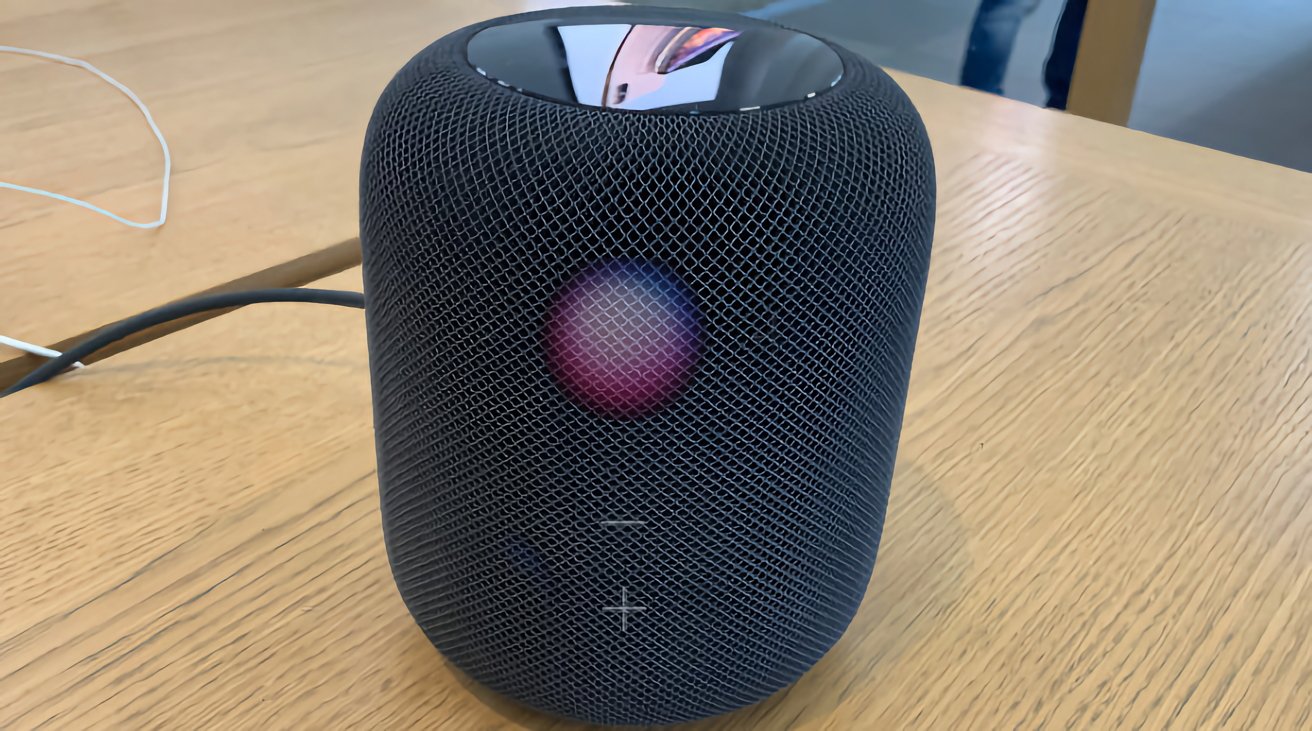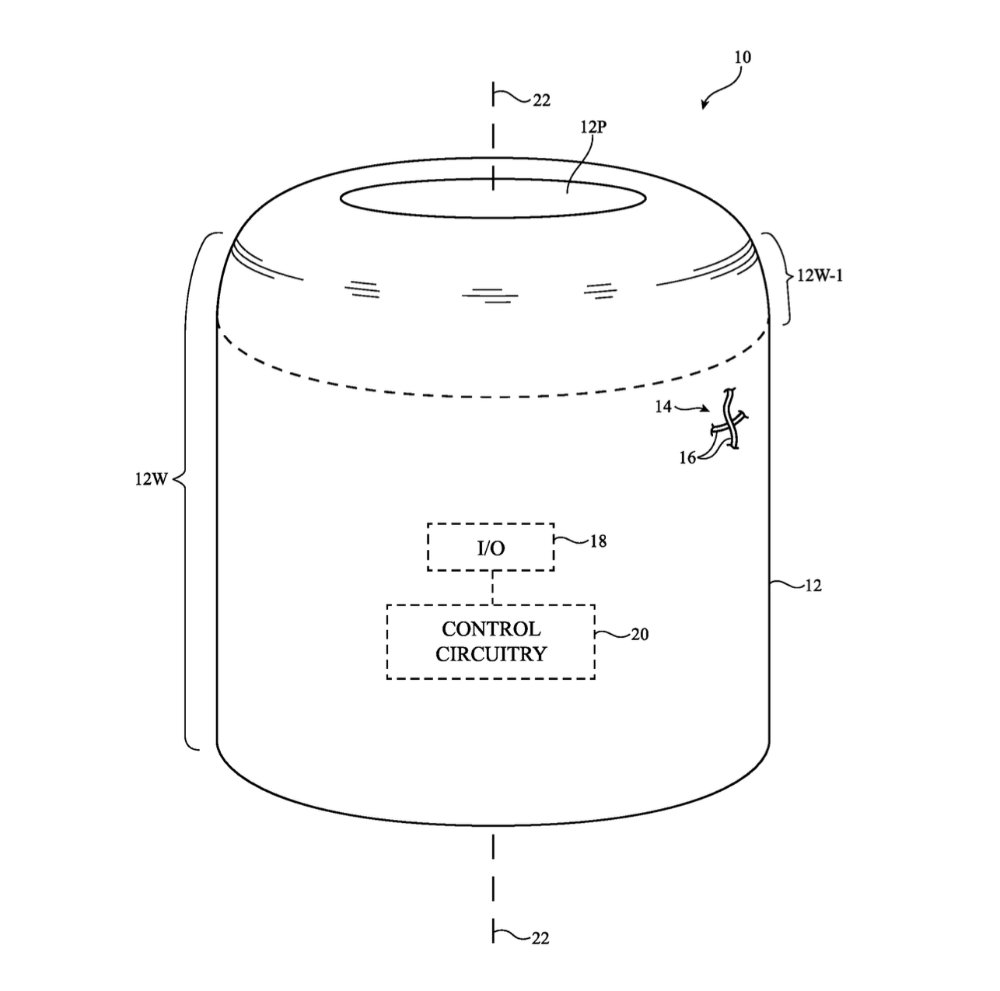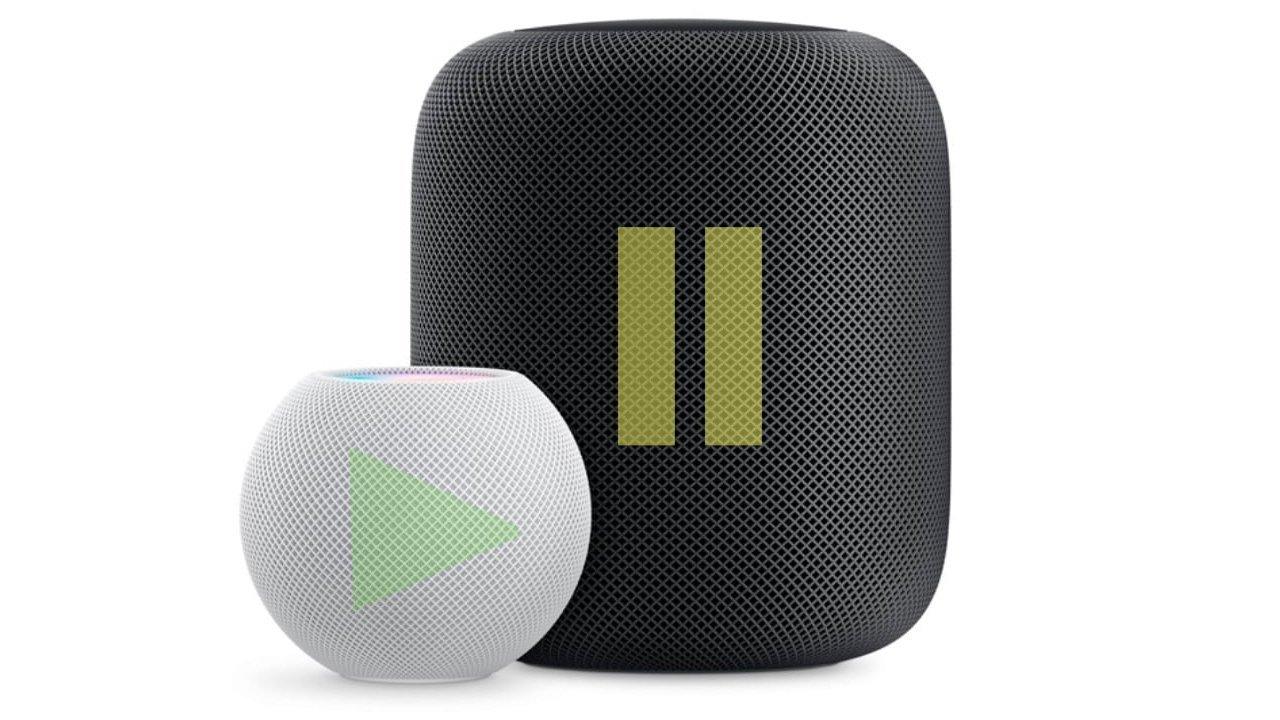Future HomePods, iPhone cases, Apple Watch bands and more could display information right on their familiar fabric covering, if the latest of very many Apple patent applications is anything to go by.
If a HomePod with a screen is the most commonly expected new home device that Apple may make, it’s also surely the easiest. Apple makes screens, Apple makes HomePods, so no matter how good it is, a HomePod TV is not going to be earthshaking.
But it’s also, quite definitely, not the only avenue Apple is exploring. There’s a newly-revealed patent application called “Fabric-Covered Electronic Device With Light-Emitting Components,” for instance.
And it is just one instance. While this new patent application has plenty to say about turning the fabric around a HomePod into a light source, what’s really key is that it is only the latest of very many similar ideas.
Some concern using the fabric as a touch-sensitive button, so that the HomePod’s distinctive mesh could be more interactive. Even that one, though, includes mention of a way to make the fabric light up around that button.
That was in 2021, where in March 2020, Apple applied for a patent for a similar “fabric-covered electronic device with touch sensor.” In March 2021, Apple went the other way and instead of being about touch with a little mention of lights, it was all-in on illuminated fabric.
More specifically, it was about not just illuminating a few strands of the fabric. It was about embedding a display within a fabric cover.
Detail from the patent showing a HomePod with both input controls and some output in the fabric mesh
At points, including in this latest patent application, Apple discusses how fabric could block light coming from a device’s chassis. Part of its proposed solutions involve what appears to be a simple case of how “reflective coatings… may be applied to make [plastic strands] reflective.”
But then strands “may include optical fibers (e.g., lossy optical fibers with surface roughening or other features that allow the strands to guide light while emitting portion of the guided light outwardly).” Such strands “can be provided with light from light sources such as light-emitting diodes to display information (e.g., desired patterns of light).”
It’s not likely that Apple thinks it has a way to turn overlapping strands of fabric into a true screen. Instead, it’s seemingly certain that Apple thinks it knows how to use light-emitting fabric with such precision that it can form images on the HomePod cover.
In this latest patent application, Apple talks about the whole package of wrapping fabric around a chassis. And it’s specifically the chassis of a HomePod that it’s discussing, though later it does the patent ritual of naming every potential device it can.
“An electronic device such as a voice-controlled speaker device may have a cylindrical shape,” it says. “The electronic device may include a housing, a speaker in the housing configured to emit sound, and a display in the housing.”
“The display may include a substrate, light-emitting components mounted on the substrate,” it continues, “an opaque support structure mounted on the substrate, a diffuser that is mounted to the opaque support structure and that overlaps the light-emitting components, a display cover layer that overlaps the diffuser, and foam that is interposed between the opaque support structure and the display cover layer.”
Maybe more revealing than the specifics of the different elements is a further comment about the use of all of this. “The light-emitting components may be arranged in groups that have the same layout and orientations that vary as a function of angular position relative to the center of the display.”
In other words, this is not about flashing one strand of fabric like a color alert. These light components can be arranged to convey information.
Apple’s stream of patents and patent applications in this area do show that the company is putting a lot of effort behind the idea — and consistently, too. So far the only details come from patents that concentrate on achieving a feature rather than showing what it could be used for.
Don’t expect to watch Apple TV+ on a fabric screen, but status indications like pause should be possible
So we don’t know what Apple thinks we will want to see displayed on devices with such fabric around them. But you can imagine in a room full of HomePods, the one reacting to your voice having some indication on its surface that it’s listening.
Or if you make a gesture to mute all music around you, perhaps a HomePod could display the icon of a silenced speaker, or a pause button.
There is also the possibility — always a factor with patent and patent applications — that nothing will ever come of the idea. Or perhaps more likely, that nothing apparent will come of it and instead the technology becomes an invisible part of something else.
Even when a patent is granted, it’s no certainty that Apple will release a product based on it.
However, when there are an ever-increasing number of patent applications around the same idea, it is a certainty that Apple is pursuing it thoroughly. And, probably has something specific in mind.







